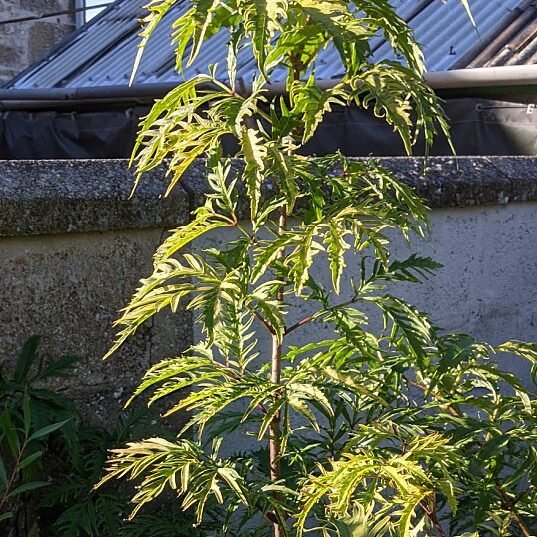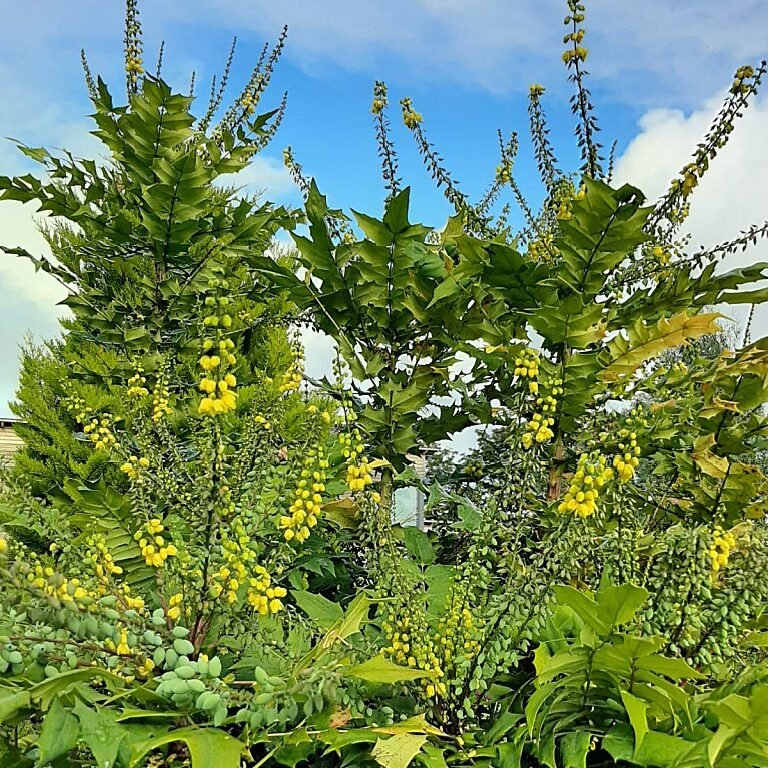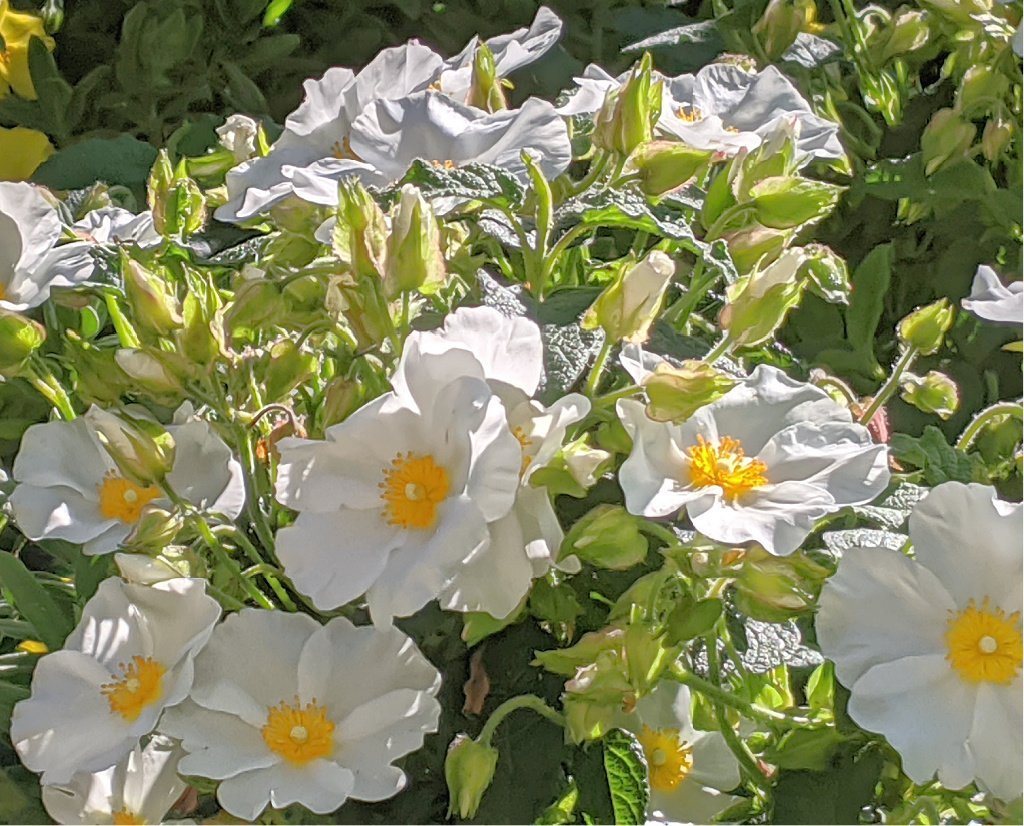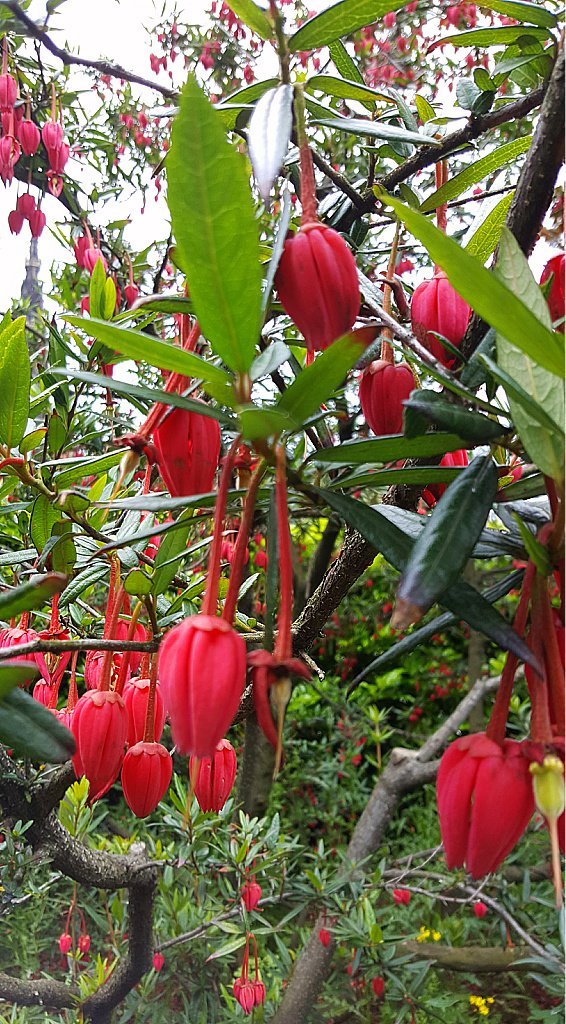Reliable shrubs are those, in my book, that will survive the winder undamaged and not need anything in the way of weather protection. Because, let’s face it, when autumn come along the thoughts of the caring gardener turns to cossetting tender shrubs.
Yes, these temperamental treasures in the garden are going to need a bit bield (Scots: a little bit of shelter) over the winter.
This means windbreaks and wigwams of hideous proportions. Bubble wrap is employed and does nothing for the garden ambience in the winter months.
Chicken wire and netting goes round puir wee rhodies or maybe Phormium (New Zealand flax). Then it’s peat or ashes over Agapanthus, panes of glass over precious alpines. (All that bending of wire and securing vulnerable glass in particular is a scutter (Scots: a fiddly task.). Best to avoid Lewisia and other things that can’t take winter wet.)
Remember – all this is optional. You are invited to take a chance, as far as I am concerned!
Winter protection
Making the tender ones weel-happit for the winter is as much a garden routine as raking leaves. (Oh wait. I never rake leaves. The worms take care of them.)
Plant survival through the winter does depend on factors like distance from the sea, garden aspect, whether or not you’re in a frost pocket and so on.
For instance, we might be about 58 degrees north, but I have kept things with a tender reputation, such as Cistus, thriving for a few years now – mostly because they grow about 200 metres from the sea, I think. When I gardened further to the east on an exposed site it was more of a struggle.
In any case, there are plenty of reliable shrubs that shrug off the worst that winter can throw at them and still give value for money.
Top of my easy-peasy list has to be the everyday Senecio with its felted grey leaves and yellow flowers checking the salty wind in many an exposed or seaside garden.

Mix it with spiky sea buckthorn if you want to keep unwanted visitors out. Then there are the trouble-free escallonias, usually guaranteeing all year interest, or the cut-leafed golden elder (Sambucus racemosa ‘plumosa aurea’) if you want something a bit more exotic but easy in the deciduous department.
Cut it back hard in the spring if you like dense growth with big leaves. Otherwise, it’s stick it in and let it grow. Actually, a wee feed or two wouldn’t do any harm. But it’s certainly on any list of reliable shrubs
Shrubs for sale under awnings – beware!
Of course, the other side of all this are those shrubs you fall for in the nursery, especially when they are in windproof polytunnels, yet somehow they never quite cope with the rigours of the place you chose for them out in the open garden. For instance, I never seem to have a lot of luck with any of the mahonias.
I love the leaf shape and the perfume of the yellow flower sprays of these handsome plants of the deep woods of North America. (The hint of their preferred culture, by the way, lies in their native habitat – like the camellia tribe, they prefer the shelter of woods where the winds don’t blow too strongly.)

But by March they tend to look a bit scorched if planted without shelter. They simply don’t seem to like the kind of exposure they get in my patch. Yet every time I see Mahonia x ‘Charity’ growing in some city-centre garden I think I ought to persevere.

I find these winter-flowering viburnums a bit erratic, even in shelter. Again, when there is a good display of their pale little scented flowers in the depths of winter, you forgive them everything. Worth a try for sure. So they almost make it on the reliable shrubs listing.
It’s the same with the winter-flowering viburnums. I once knew a v. ‘Bodnantense’ breaking all the rules in an east-facing gable-end wind tunnel which flowered all over from November onwards.

Two blue but not necessarily reliable shrubs
Ceanothus are another family with a question mark over their hardiness. Of course, it depends to some extent on species. My ‘Gloire de Versailles’ is perfectly reliable and doesn’t always need the south-facing wall which some of the textbooks advise. And ceanothus are worth trying simply because that soft powder blue bloom is so unusual amongst large shrubs.

Having said that, it’s the blue of the plumbago Ceratostigma plumbaginoides that may also tempt you in the plant centre. I’ll bet you see it displayed in that section under an awning. And good luck with keeping that one going! I’ve never succeeded. It’s not on my reliable shrubs list.
Think about the planting site for reliable shrubs
…and be realistic. If it’s autumn planting time, and you are planning to invest in some garden colour and don’t want disappointments, then look closely at your planting site. Will the winter winds sweep through it? Is it in sun or overhung by tall trees? Don’t worry, there’s a plant for every location, it’s just that mistakes can be expensive.
It would be nice to live in those soft and favoured spots where such exotica as Crinodendron Hookerianum, the lantern tree or Desfontainia spinosa, like a very upmarket holly, thrived.
I associated both these lovely things with the mild west of Scotland. Having said that, I could show you a thriving Crinodendron (‘Chilean lantern tree’) in East Lothian, but in a sheltered wall garden.

Sometimes there seems to be very localised ‘micro-climates’ that can make all the difference.
But unless your garden is in of these soft and favoured western spots where the Gulf Stream waters lap then you must be cautious and remember that gardening books for England can be a bit optimistic.
However, we northern gardeners can’t complain. At least we’ve got the toughies.
And I’ve just had this afterthought: some of these opinions of plant hardiness were formed over, oh, quite a few decades. Maybe our warming climate is also a factor – and things that would not survive in the north of Scotland, say, 30+ years ago, are much more manageable now. That would explain why my rock-roses do so well these days…
